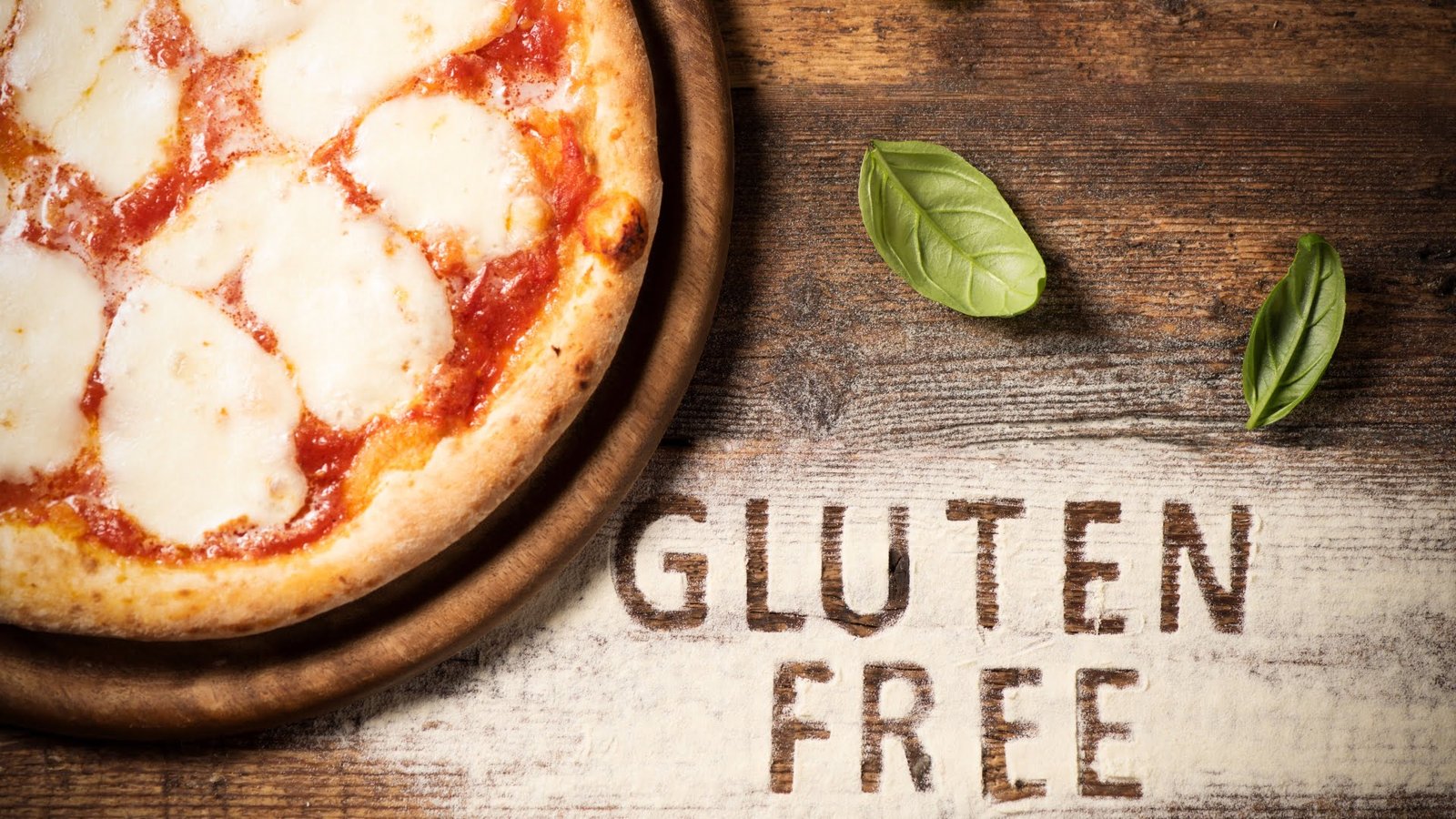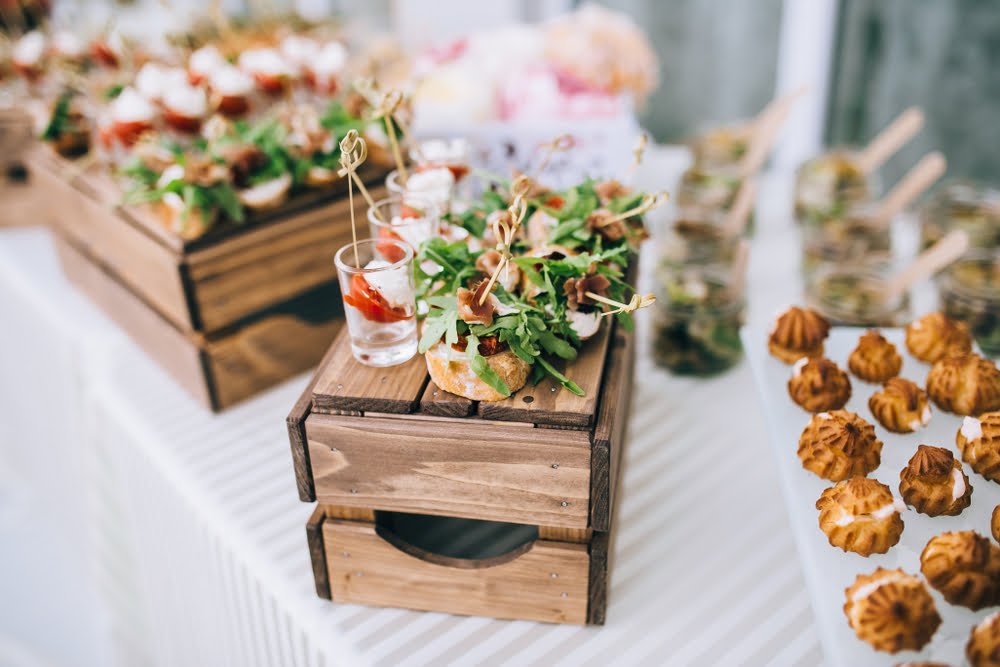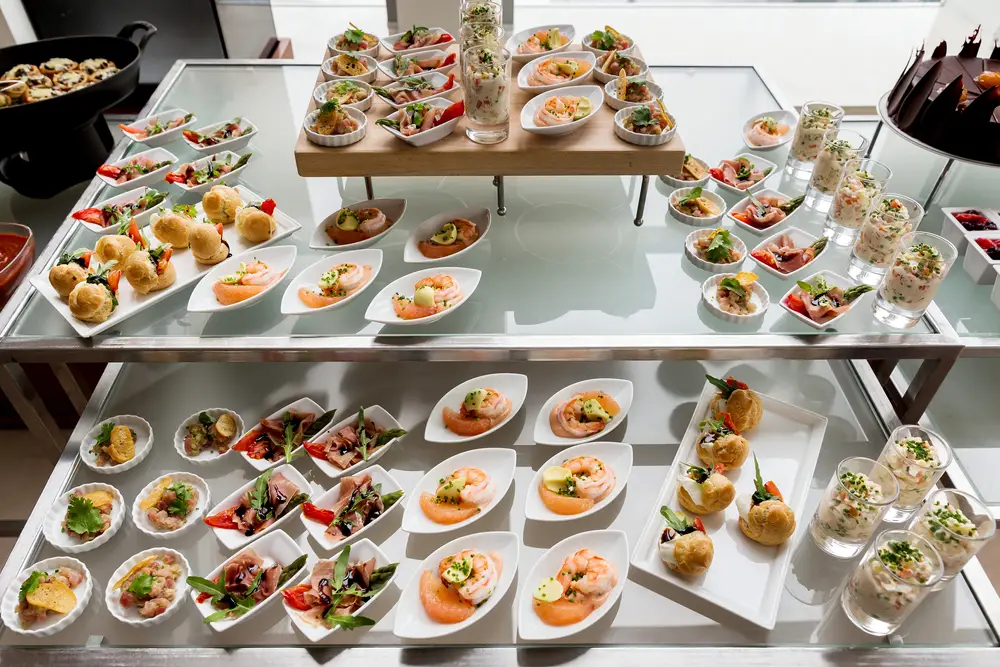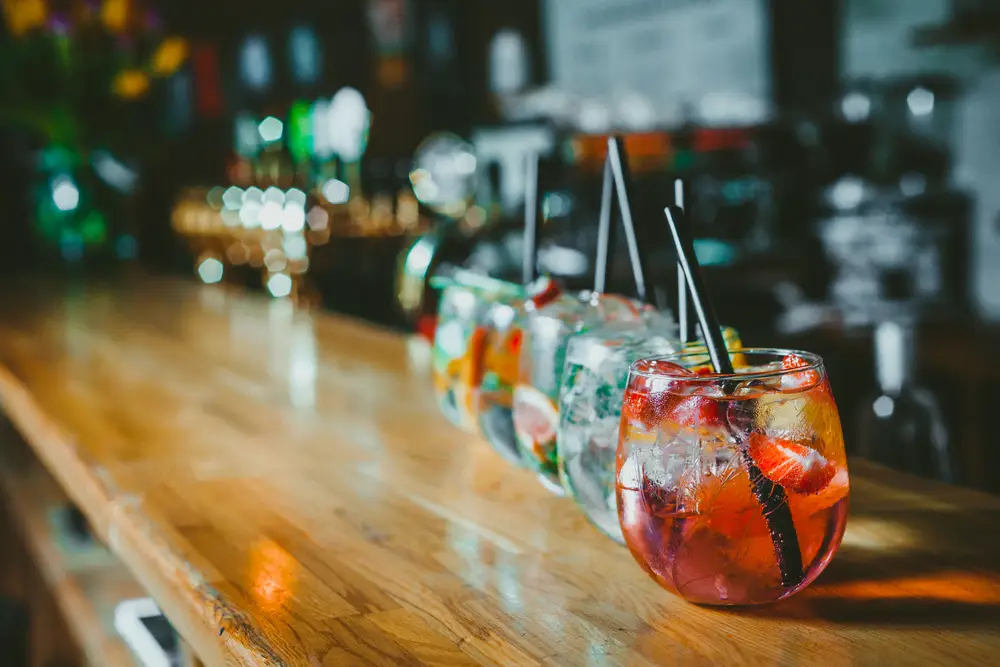Have you ever wondered about gluten-free catering? Well, gluten is a special protein found in some foods that not everyone can eat. Nowadays, lots of office workers are choosing gluten-free meals because it helps them stay healthy. When we’re getting food ready for a bunch of people, having gluten-free options isn’t just a choice, it’s important for some people who are allergic to gluten protein.

So, when we think about gluten-free catering, we’re talking about making sure everyone at the office can munch on tasty treats without any worries. Cool, right? Let’s delve into understanding gluten-free diets and some of the amazing gluten-free catering ideas.
Understanding Gluten-Free Diets
Gluten is a type of protein that is present in foods like wheat, barley, and rye. According to recent statistics, some people, about 1 in 100 worldwide, have something called celiac disease, and gluten doesn’t get along with them. It makes them feel sick. So, to keep themselves healthy, they follow a gluten-free diet.
They follow a special and customized dietary plan for their meals—no wheat, barley, or rye allowed! It is considered an important rule for them to stay strong and feel good every day. That’s why some people choose gluten-free foods.
How to Cater to People with Celiac Disease?
The essential tips given below should be followed if you are hosting guests or relatives who suffer from celiac disease.
• Find out which gluten-free recipes the individual with celiac disease prefers. Additionally, you might ask them to provide you with a couple of other recipes.
• When purchasing ingredients, be sure you exclusively purchase those labeled as “gluten-free.” Additionally, you may search for goods bearing the Coeliac Australian Endorsement badge.
• While the dish is cooking, save the sealed containers from the store-bought items so your friend can verify that they are gluten-free.
Creating a Well-Balanced Gluten-Free Menu
When planning a menu without gluten, we aim for a good balance and healthiness. Instead of using grains like wheat, we choose options like quinoa and brown rice. These grains are great for our menu—they’re not just tasty but also good for our bodies, according to studies.

They have lots of nutrition, even more than wheat! It’s not just about grains; we also include fresh fruits, vegetables, and other proteins to make our menu healthy. Health professionals assume to add a list of healthy alternatives to keep our bodies in shape.
Highlighting the Benefits of Gluten-free Diet
If a gluten-free diet is not properly planned, it can be costly to comply with and may leave out vital nutrients. However, it is essential for those with the condition or other gluten-related illnesses.
Getting Rid of Digestive Symptoms
A gluten-free diet is typically tried by patients to aid with digestive issues. This involves a wide range of symptoms, such as:
• Bloating
• Either constipation or diarrhea
• Exhaustion and fatigue
Studies reveal that a diet free of gluten can aid NCGS and celiac disease patients with their digestive issues.
Reduce Chronic Inflammation
The body uses inflammation as a natural means of fighting and recovering from infection. Inflammation can occasionally spiral out of control and last for days, weeks, or even years. This is referred to as chronic inflammation, and it may eventually result in several health issues. In people with celiac disease, eliminating gluten from their diet can help lessen chronic inflammation.
Boost Energy Levels
People with celiac disorder frequently experience fatigue or lethargy. Additionally, they could suffer from brain fog, which is marked by disorientation, forgetfulness, and trouble concentrating. These signs might be the consequence of nutritional deficits brought on by gastrointestinal injury.
One study of the literature found that tiredness was much higher in celiac disease patients than in non-celiac patients. Furthermore, research that made up the study came to the conclusion that avoiding gluten in your diet was a useful way to lessen fatigue.
Appetizers and Starters
When we start a meal with tasty bites, we can try appetizers like guacamole with gluten-free chips. It’s like the classic party favorite but made for people who don’t eat gluten. What’s interesting is that more and more people are liking gluten-free crackers and chips.
It’s not just something new; numbers from the market show that many people are picking these snacks. So, when we snack on gluten-free options, we’re not just enjoying delicious bites but also being part of a popular and tasty choice.
Some of the most famous gluten-free appetizers include Baked Apple Oatmeal, Baked Pears, and Stewed Apples.
Main Course Delights
For the main course, we can enjoy dishes like grilled salmon with quinoa pilaf or vegetable stir-fries using gluten-free sauce. These options taste delicious and are good for our cardiac health and overall well-being.
Research shows that fish and plant-based proteins found in these dishes are healthy. So, when we have these main courses, we’re not just treating our taste buds but also providing our bodies with the nutrients they need to stay strong.
Nutritional Benefits of Plant-based Proteins in Gluten-free Diets
Following are the nutritional benefits of plant-based proteins.

Assists in the Management of Weight
A well-thought-out, vegan, gluten-free diet can help with weight control. This diet is helpful for maintaining an appropriate weight because it has a strong focus on whole, plant-based nourishment, which is frequently lower in calorie intake and saturated fats. Furthermore, foods that are naturally devoid of gluten, such as rice, quinoa, and lentils, also contain important nutrients.
Promotes Heart Health
When properly balanced, a vegan gluten-free diet should be high in heart-healthy foods including vegetables, whole grains, fruit, and nuts. This combination can lower blood pressure, improve cholesterol, and lower the risk of heart attack and stroke.
Increases Nutrient Intake
People following a vegan, gluten-free take in more vital minerals, antioxidants, and vitamins since they are consuming a wide variety of plant-based foods. These nutrients are essential for preserving general health and well-being.
Sides and Accompaniments
Now, let’s talk about tasty side dishes that enhance our meals. Make sure to add roasted veggies with their savory goodness or a refreshing quinoa salad. These sides aren’t just about flavor; they’re loaded with fiber and nutrients. Studies tell us that including veggies and whole grains in our daily meals gives our bodies a healthy boost. Don’t forget to add healthy side dishes to your gluten-free catering menu.
A diet high in fruits and vegetables can lower your blood pressure, lessen the risk of stroke and coronary artery disease, prevent some cancers, cut the risk of digestive and ocular issues, and improve blood sugar regulation, which can help control hunger. Consuming fruits and vegetables that aren’t starchy, such as pears, apples, and green leafy vegetables, may even help people lose weight.
Desserts and Sweet Treats

Let’s discuss yummy desserts that are gluten-free, like flourless chocolate cake or almond flour cookies. These desserts not only taste amazing but also have less gluten. And guess what?
More and more people are loving these gluten-free sweet treats. The market is growing because people want desserts that are both delicious and healthier. So, when we enjoy these treats, we’re not just satisfying our sweet tooth; we’re also going for a tasty and healthier choice.
What are Some Gluten-free Dessert Alternatives?
There are plenty of delicious gluten-free dessert alternatives to satisfy your sweet tooth! How about trying flourless chocolate cake, almond flour cookies, or a refreshing fruit sorbet? You can also explore gluten-free versions of classics like brownies, cheesecake, or even coconut macaroons. The options are endless, and the best part is you don’t have to compromise on taste!
Beverages and Refreshments

Gluten-free drinks include fruity water, herbal teas, and even gluten-free beer and wine. These beverages are not just tasty but also friendly to those who avoid gluten. And you know what’s cool? More and more people who care about their health are choosing gluten-free drinks. It’s becoming a trend because people want to enjoy drinks that are both delicious and good for them. It is always preferable to sip on these choices to quench your thirst.
Drinks That Are Good for a Gluten Free Catering
It’s a common misconception that only certain drinks are perfect for vegans. Among them are:
• Freshly extracted drinks.
• Milk smoothies made without dairy.
• Teas infused with hibiscus, chamomile, and peppermint (omit honey).
• Coffee beverages with soy milk.
Buffet and Catering Presentation
When setting up a buffet or catering, it’s important to clearly label and keep gluten-free dishes separate. This helps make sure they don’t mix with gluten-containing ones, keeping everyone safe.
Studies at workplaces show that when events offer options for different diets, like gluten-free choices, people are not only motivated but also get more work done. The sole purpose is not just about good food but also making sure everyone feels good and works well together!
How Productivity Increases at Workplace After Taking Gluten-free Meals?
While there’s no direct evidence to suggest that productivity increases specifically due to consuming gluten-free meals, some people report feeling better overall when they switch to a gluten-free diet, especially if they have gluten sensitivity or celiac disease.
Improved well-being can have positive effects on productivity. If someone was previously experiencing discomfort or digestive issues due to gluten consumption, eliminating it from their diet may lead to increased energy levels, better focus, and improved mood—all of which can contribute to a more productive work environment.
It’s essential to note that individual responses to dietary changes vary, and not everyone will experience these benefits. Additionally, according to research, maintaining a balanced and nutritious gluten-free diet is crucial to ensure that you’re still getting all the necessary nutrients.
Addressing Cross-Contamination Concerns
When it comes to food, it’s important to handle it safely to avoid cross-contamination. This helps make sure everyone has a healthy and safe dining experience. Studies show that if gluten, which can be harmful to people with celiac disease, gets mixed up with their food, it can cause problems. So, it’s super important to be careful when preparing food to keep everyone safe and sound.
How to Prevent Gluten Cross-contamination?
In addition to selecting gluten-free items, it’s critical to prevent cross-contamination of such foods during preparation, cooking, and serving. If you have celiac disease, it takes just a very small quantity of gluten to cause damage to your small intestine.
The following actions can be taken to prevent cross-contamination:
1. Products devoid of gluten should be kept in distinct, labeled, sealed containers.
2. Check to ensure that all the equipment, surfaces, and cooking utensils used to prepare gluten-free meals are clean and gluten-free.
3. Cook the gluten-free pasta in a clean saucepan with clean water, then strain it through a clean strainer.
Catering to Various Dietary Preferences
It’s important to have menus that include everyone’s different food preferences at the office. This healthy habit is not just about gluten-free food but also about understanding and respecting all the different ways people choose to eat. It makes the office a place where everyone feels welcome and included, no matter what kind of food they like.
The Benefits of Providing Gluten-free Catering Options in Workplace
It’s critical to take everyone’s nutritional needs into account. Offering a range of choices is also crucial to ensuring that everyone feels included. Those who must consume gluten-free foods may frequently feel excluded.
According to National Library of Medicine research, around 21% of patients with celiac disease stay away from social gatherings because they require particular meals. They could choose to remain home if they are hungry, which could prevent them from attending social events and office parties.
Having food that is easily accessible might also be quite beneficial! Once a restaurant satisfies its demands, patrons are more inclined to return. It makes their experience more pleasant.
Conclusion
Making sure that office catering includes gluten-free options is a big deal. It’s not just about being inclusive to those with gluten-free diets; it’s about recognizing and respecting the different ways people have their meals. When workplaces allow various dietary needs, it creates a culture of consideration and well-being among employees.
Having inclusive menus doesn’t just make the food choices better; it also boosts workplace satisfaction and strengthens the bonds between colleagues. So, let’s remember that promoting this healthy lifestyle through what we serve not only contributes to a healthier work environment but also makes everyone feel valued and part of the team.

